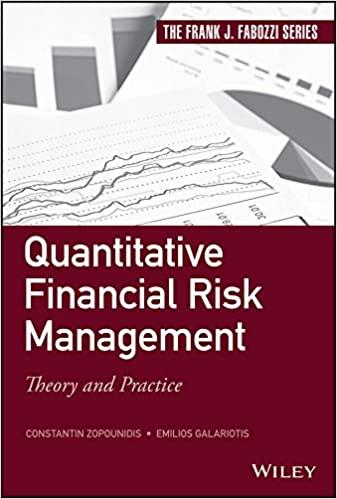Question
For example, assume Jackson wants to earn a return of 7.00% and is offered the opportunity to purchase a $1,000 par value bond that pays
For example, assume Jackson wants to earn a return of 7.00% and is offered the opportunity to purchase a $1,000 par value bond that pays a 7.00% coupon rate (distributed semiannually) with three years remaining to maturity. The following formula can be used to compute the bonds intrinsic value:
omplete the following table by identifying the appropriate corresponding variables used in the equation.
| Unknown | Variable Name | Variable Value |
|---|---|---|
| A | Bonds semiannual coupon payment | |
| B | $1,000 | |
| C | Semiannual required return |
Based on this equation and the data, it is to expect that Jacksons potential bond investment is currently exhibiting an intrinsic value equal to $1,000.
Now, consider the situation in which Jackson wants to earn a return of 10%, but the bond being considered for purchase offers a coupon rate of 7.00%. Again, assume that the bond pays semiannual interest payments and has three years to maturity. If you round the bonds intrinsic value to the nearest whole dollar, then its intrinsic value of (rounded to the nearest whole dollar) is its par value, so that the bond is .
Given your computation and conclusions, which of the following statements is true?
When the coupon rate is greater than Jacksons required return, the bond should trade at a premium.
When the coupon rate is greater than Jacksons required return, the bond should trade at a discount.
A bond should trade at a par when the coupon rate is greater than Jacksons required return.
When the coupon rate is greater than Jacksons required return, the bonds intrinsic value will be less than its par value.
Step by Step Solution
There are 3 Steps involved in it
Step: 1

Get Instant Access to Expert-Tailored Solutions
See step-by-step solutions with expert insights and AI powered tools for academic success
Step: 2

Step: 3

Ace Your Homework with AI
Get the answers you need in no time with our AI-driven, step-by-step assistance
Get Started


